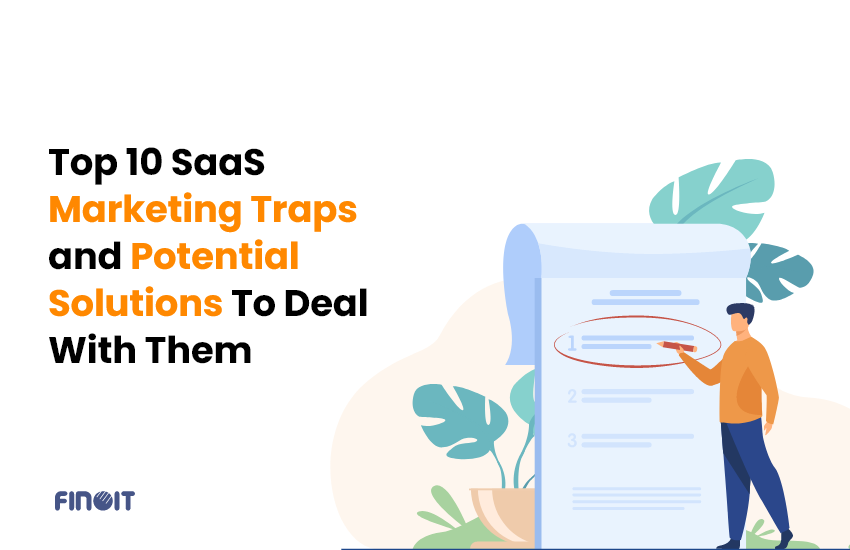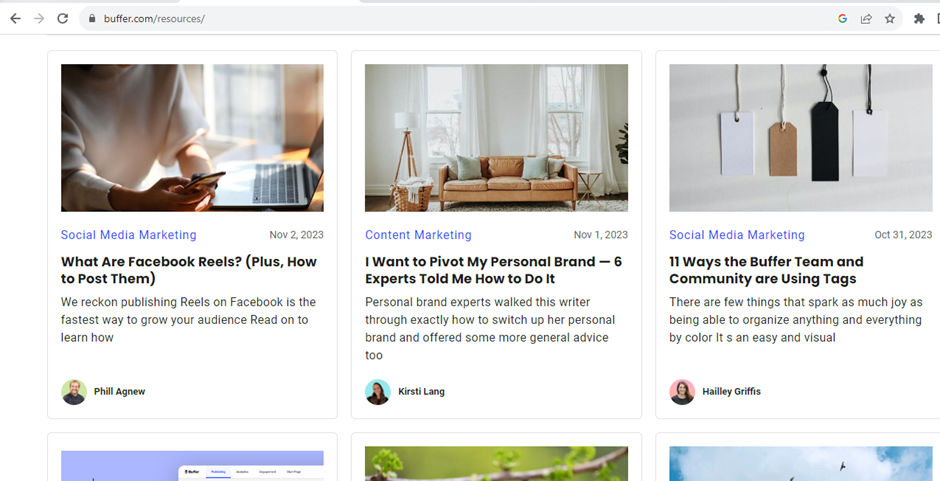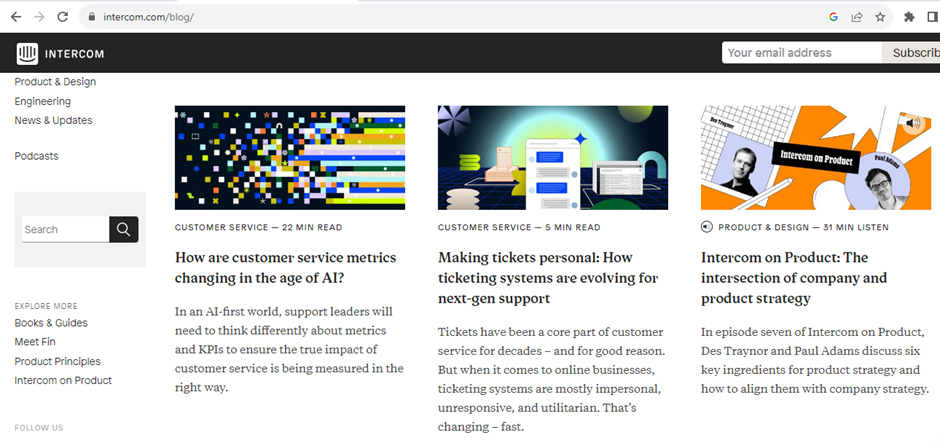Top 10 SaaS Marketing Traps and Potential Solutions To Deal With Them

The process of lead generation in SaaS is an uphill task. Beyond the customary steps of understanding your customer base and competitor analysis, you need to delve deeper. You must convey your value proposition to build a customer base, and your customers must feel encouraged to periodically invest in your SaaS product. Otherwise, they will seek alternatives from competitors who are better positioning and branding themselves.
The marketing tactics must evolve while consistently delivering value and addressing your customers evolving needs.
The likelihood of committing mistakes is high in such a challenging exercise.
We shed light on the top 10 SaaS marketing mistakes that can have huge consequences! We look at them and see how these follies can bring down your SaaS platform. But no need to get worked up about it as we nip the problem in the bud by offering a viable approach to avoid each.
Also Read: Everything you need to know about SaaS
Top 10 SaaS Marketing Mistakes That Can Undermine Your Efforts Along With Potential Solutions
Know and sidestep 10 common mistakes in SaaS marketing to build a strong marketing funnel that brings high-value leads using the solution that we prescribe for each of them.
Investing inadequate efforts in Research
Research is the cornerstone of a successful SaaS business, yet many fall into the trap of not applying the right efforts. At a time when 78% of small businesses have already invested in SaaS solutions, research is the first and most important step to building an understanding of your target audience.
Failing to conduct thorough research can lead to a misguided marketing strategy. As David Ogilvy once remarked, “Advertising people who ignore research are as dangerous as generals who ignore decodes of enemy signals.”
You must delve deep into the demographics, pain points, and preferences of potential customers. Without this foundational knowledge, a SaaS business may end up marketing to the wrong audience, which will waste the resources used.
How to Address?
SaaS businesses must adopt a multifaceted approach. Firstly, they must diligently define their target audience. Understanding the nuances of the audience ensures that marketing efforts are focused and tailored for maximum impact.
Next, identify market trends, assess competitor strategies, and stay attuned to emerging technologies. Conducting usability studies can prove important from the point of view of refining the product, optimizing user experience, and reaching potential customers.
Poorly conveying the Value Proposition
When a value proposition is not clearly articulated, it leads to a lack of differentiation in the market and can have far-reaching implications. Potential customers struggle to understand what sets your SaaS product apart from its competitors.
Optimized value propositions are thus essential as they have been shown to increase customer interaction rates on a website by a substantial 35%.
As Robert Kaplan, the American Academic, astutely noted, “Consistent alignment of capabilities and internal processes with the customer value proposition is the core of any strategy execution.” His words highlight the fundamental importance of ensuring that the value proposition is not just a marketing message, but a guiding principle that permeates every aspect of a business.
How to Address?
Have a strategic approach by focusing on the specific benefits and advantages that your product offers to prospects. Communicate your message in a concise and compelling manner, highlighting how the SaaS solution proves useful for addressing niche needs of the target audience. Discuss about your SaaS product’s scalability, flexibility, and all other dimensions.
Next, it’s crucial to ensure consistency across all touchpoints, from the website messaging to customer support interactions. It will reinforce the value proposition at every stage of the customer journey, and build trust with new customers.
Misjudged Pricing
Pricing fumbles can manifest in various ways. Not spending enough time on pricing, failing to localize pricing for different markets, or offering too many price options can all prove troublesome. For instance, offering only one price option may limit a business’s ability to cater to diverse customer needs, while discounting too much may erode perceived value. Consider all factors that affect the pricing of your SaaS product.
Not incorporating pricing in the research process is one major reason why pricing strategies are impacted. Only 6% of SaaS companies have conducted sophisticated pricing research on buyer needs and willingness to pay. So, pricing decisions must form the part of strategy right from its onset.
How to Address?
By establishing a pricing committee comprising cross-functional team members. Determine pricing using metrics and align the cost with the perceived value delivered to customers. Additionally, having a clear and easily accessible pricing page on the company website is essential. Tailoring pricing options based on customer segments and their specific requirements makes sure that you are effectively addressing a diverse range of needs.
98% of SaaS businesses reported positive outcomes from implementing core changes to their pricing policies. So, meticulously adhering to these steps will bring value to your pricing decisions.
Atlassian has demonstrated how you can build a successful pricing strategy. It prioritized simplicity and transparency by offering a flat-rate pricing model. So, customers could pay a fixed fee for their products, regardless of the number of users.
Lacking an Onboarding Plan
The onboarding process is the first impression a customer has of a B2B product, and if it’s not executed effectively, it can lead to frustration, confusion, and ultimately churn. SaaS businesses that fail in onboarding fail to build a clear and structured onboarding plan that leads customers astray.
A significant 63% of customers consider the onboarding period when making the decision to subscribe to a service or purchase a product. And 74% of customers are willing to switch to alternative solutions if the onboarding process proves to be overly complex or cumbersome. So, there’s a direct correlation between a seamless onboarding experience and customer retention.
How to Address?
Develop a plan that guides users through the platform’s features and functionalities. Provide them with a range of resources, including how-to guides, video tutorials, and template libraries. The resources should help users understand the platform’s value and its potential for their specific needs.
HubSpot has set an example of how you should onboard customers. Its process is designed to help users get comfortable with the platform and understand its real value. Most importantly, it offers a personalized onboarding sequence not just to paid users, but even to free users who receive a welcome email and other useful information.
Making No or Poor Use of KPIs
One of the primary issues in SaaS marketing arises when businesses fail to identify and track the most relevant metrics for their specific industry, product, and audience. The result can be a misallocation of resources and an inability to gauge the true impact of marketing efforts. Additionally, even when businesses do utilize KPIs, there may be a tendency to focus on vanity metrics—superficial indicators that may not align with the core objectives of the business.
Without a comprehensive understanding of how each metric interrelates and contributes to overall performance, businesses may make decisions based on incomplete or inaccurate information. This can potentially misguide your efforts.
How to Address?
SaaS businesses must adopt a structured approach to KPI selection, ensuring that they align with their specific business goals. They must establish clear benchmarks and regularly review and analyze these metrics to gain valuable insights.
We have simplified the process by offering important KPIs. Use them meticulously at relevant junctions to bolster your SaaS marketing strategy. As a responsible SaaS app development company, we always ask our clients to monitor these KPIs after the delivery of the SaaS platform.
| KPI | How to Calculate |
| Customer Acquisition Cost (CAC) | Total Marketing and Sales Expenses / Number of New Customers |
| Customer Lifetime Value (CLTV or LTV) | Average Revenue per User (ARPU) / Churn Rate |
| Monthly Recurring Revenue (MRR) | Sum of Monthly Subscription Fees |
| Annual Recurring Revenue (ARR) | MRR x 12 |
| Churn Rate | Number of Customers Lost in a Period / Total Customers at Start of Period |
| Net Promoter Score (NPS) | % of Promoters – % of Detractors |
| Customer Retention Rate | ((Number of Customers at End of Period – Number of Customers Acquired During Period) / Number of Customers at Start of Period) x 100% |
| Expansion Revenue | (Expansion MRR – Contraction MRR) |
| Customer Health Score | Score based on Engagement, Usage, Feedback, etc. |
| Lead-to-Customer Conversion Rate | (Number of New Customers / Number of Leads) x 100% |
| Customer Engagement | Measures like logins, feature usage, time spent, etc. |
| Churn MRR | (MRR at Start of Period – MRR at End of Period Due to Churn) |
| Average Revenue Per User (ARPU) | Total Revenue / Total Number of Users |
| Customer Acquisition Rate | (Number of New Customers / Total Number of Customers) x 100% |
| Viral Coefficient | Number of Referrals per User x Conversion Rate x K-Factor |
Prioritizing Acquisition over Retention
The prevailing misconception is that acquiring fresh customers is the primary driver of growth, which leads to existing customers getting overlooked. However, this approach ignores the substantial monetary benefits that retaining and nurturing existing customers offer.
In SaaS, new acquisition is notably more expensive, ranging from 5 to 25 times the cost of retaining existing ones. Businesses have a significantly higher probability of selling to existing customers, with a success rate of around 60%, compared to a much lower 5-20% chance of selling to newly acquired customers. Sidelining your already existing customers and rushing to increase your customer base can prove disastrous to your growth tactics.
How to Address?
Adopt a balanced approach that invests in customer success initiatives, such as personalized assistance, ongoing support, and regular engagement. SaaS companies can implement customer feedback mechanisms to understand their needs, allowing for continuous improvement and optimization of the product or service.
We learn from Drift, a conversational marketing platform, how to prioritize customer retention. They realigned their team incentives to focus on customer satisfaction and retention rather than just sales or product features. It fostered a culture that valued long-term customer relationships, and could establish a foundation for Drift’s sustainable growth and success.
Not utilizing Social Proof
“The principle of social proof says so: The greater the number of people who find any idea correct, the more the idea will be correct,” says Robert B. Cialdini, American Psychologist. When the idea is not adequately presented, how will prospects read the value of your SaaS product?
Social proof, derived from customer reviews, testimonials, and endorsements, serves as a powerful tool in building trust and credibility with prospects. Ignoring it can dilute a SaaS company’s marketing efforts, as it overlooks a crucial element in convincing potential buyers of a product’s value.
For SaaS businesses, highlighting positive customer feedback is one necessary step. 57% of customers visit a company’s website after reading positive reviews. Additionally, consumers are willing to spend 31% more on businesses that have received “excellent” reviews. There’s no reason you should understate the value of positive endorsements.
How to Address?
SaaS businesses should actively solicit customer feedback, showcase positive reviews and testimonials on their website and marketing materials, and utilize platforms like LinkedIn to spotlight customer success stories. Additionally, businesses should encourage satisfied customers to leave reviews on reputable third-party review sites.
Known firms like Salesforce and Asana have been actively using social proof to illustrate how respective software solutions have positively impacted clients’ businesses. They have used a combination of elements like featuring customer logos on their websites along with narration of success stories that provided tangible evidence of their satisfied clientele.
Not Prioritizing Mobile Optimization
A significant portion of SaaS companies struggle with mobile performance, with as many as 87% failing their mobile performance evaluations.
There is a need to conduct regular testing and optimization of mobile interfaces to identify and address any usability or performance issues. SaaS businesses often tend to miss this vital step. Their inability to incorporate user feedback in mobile strategy keeps them from enhancing user satisfaction and driving engagement.
How to Address?
Adopt a multifaceted approach where you invest in responsive web design that is adaptable to various screen sizes and devices. Develop dedicated mobile apps, like those of Slack, Zoom, and Mailchimp, which can provide a tailored and optimized experience for users on the go.
Learn from known SaaS platforms about offering robust mobile apps that enable users to stay connected, conduct meetings, or manage their email campaigns seamlessly from their smartphones or tablets.
Exhibiting a Casual Attitude towards Content Marketing and SEO
As Bill Gates famously said, “Content is king,” and it is for realizing success with your inbound efforts. No empire exists without a king and so a formidable web presence is impossible without content today.
SaaS firms that employ content marketing strategies report lead generation growth of up to an impressive 400%. Imagine the loss you incur by not being serious about using content to drive growth.
Delays in publishing content, inconsistency, and inadequacy of content can hinder your ability to establish authority and provide value to its target audience. You will never be able to convey the message needed to bring prospects to you.
Moreover, not investing in SEO or utilizing poor SEO tactics can result in diminished visibility in organic search results. Approximately 53.3% of total website traffic comes from organic search, highlighting the significance of a strong SEO strategy in driving relevant and high-converting traffic.
How to Address?
There’s no alternative for SaaS firms, especially SaaS startups rather than investing quality efforts towards building a strong digital marketing strategy. Engage in regular content creation, addressing the needs and interests of the audience, and optimize the content for search engines. Content and SEO works in tandem, so secure content with a strong SEO strategy that keeps adapting to the ongoing changes in the field.
See how Buffer and Intercom use content marketing to educate and inform their target audience. Businesses can learn from them to build informative landing pages and website structure that encourages visitors to explore more on the site.

Source: https://buffer.com/resources/

Source: https://www.intercom.com/blog/
Turning a Blind Eye to Marketing Automation
In B2B marketing, where personalized and targeted communication is paramount, sidelining marketing automation can be particularly detrimental. Segmenting and nurturing leads, delivering relevant content, and tracking customer interactions at a breakneck speed make an automation platform indispensable.
While focusing on other initiatives, SaaS businesses fail to recognize the importance of marketing automation. Stuck with a manual approach, they miss out on implementing lead nurturing workflows, setting up triggered email campaigns, and utilizing dynamic content in an effective manner.
How to Address?
Do research on all marketing automation tools available for your niche and choose the one against your technical criteria and budget. After implementation, regularly monitor and analyze the tool’s performance and optimize it. To derive the best out of the chosen tool you will have to track key metrics such as email open rates, click-through rates, lead conversion rates, and customer retention metrics to fine-tune strategies and its best use.
SaaS platforms such as Lessonly, LiveChat, and Typeform showcase how SaaS companies can leverage marketing automation to enhance their marketing capabilities. They have been using the marketing automation platform Autopilot to streamline complex marketing operations and save many important hours.
Seek Expert Guidance to Build an Impeccable SaaS Marketing Strategy
As a SaaS business owner, you could have stumbled into the common pitfalls we outlined above. However, with the solutions that we offered for each, you can now safely avoid these missteps.
It’s not about realizing quick results, rather securing the long haul in the SaaS market. Success demands a well-crafted B2B marketing strategy and an unwavering commitment to refining it on a continual basis.
With our digital marketing and SEO expertise, you can successfully grow your business. So, let Finoit be your ally in crafting a strategy that maximizes your SaaS product’s growth potential.

